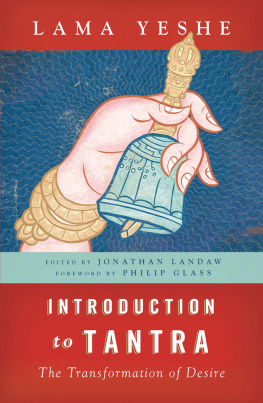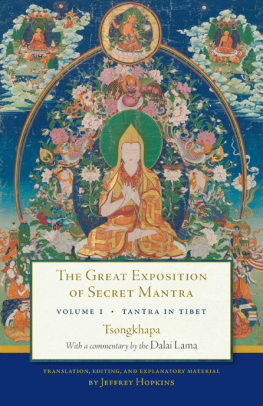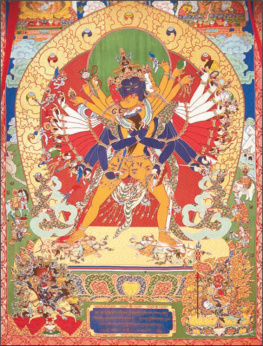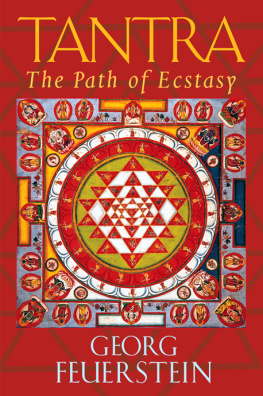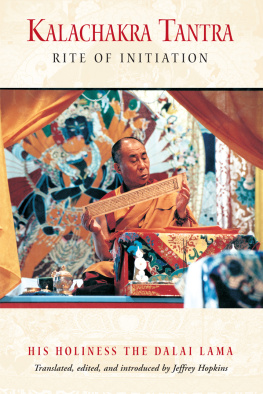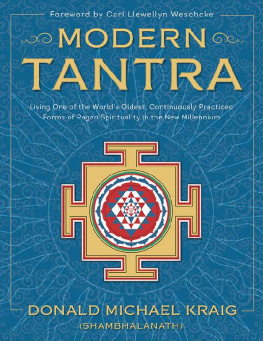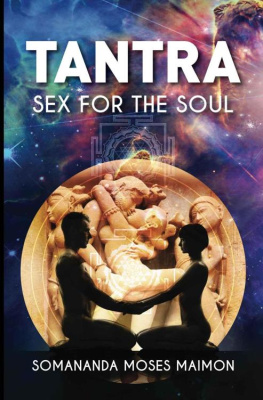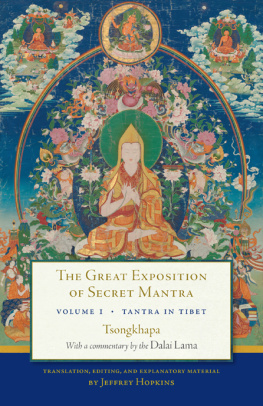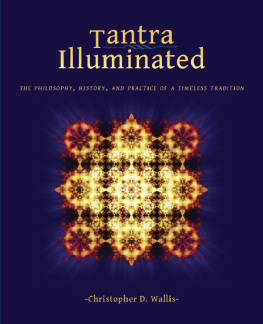
I NTRODUCTION TO T ANTRA

THE BEST INTRODUCTORY WORK ON TIBETAN BUDDHIST TANTRA AVAILABLE TODAY.
JANET GYATSO, HERSHEY PROFESSOR OF BUDDHIST STUDIES, HARVARD UNIVERSITY
What is tantra? Who is qualified to practice it?
How should it be practiced? What are the results?
Lama Yeshe presents tantra as a practice leading to joy and self-discovery, with a vision of reality that is simple, clear, and relevant to twenty-first-century life. Introduction to Tantra is the ideal entry to this highly regarded Buddhist practice.
Demystifying this ancient tradition, Lama Yeshe relates tantra to modern life and shows how tantric practice, correctly done, can transform dissatisfaction and clinging into blissful, compassionate wisdom.
THUBTEN CHODRON, AUTHOR OF BUDDHISM FOR BEGINNERS
No one has summarized the essence of tantra as well as Thubten Yeshe does here.
RELIGIOUS STUDIES REVIEW
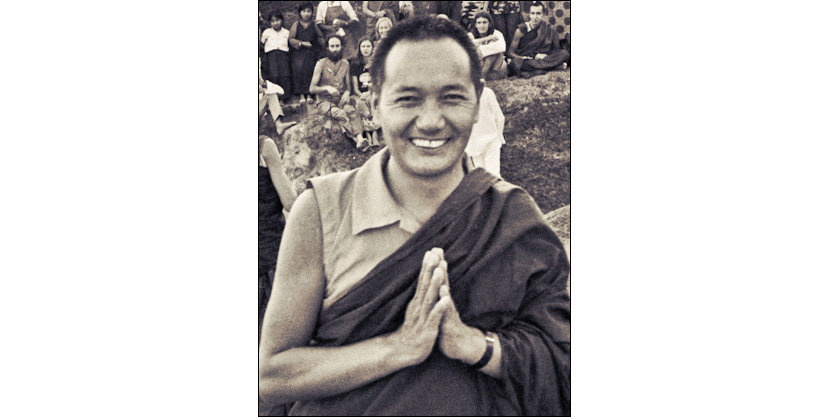
LAMA THUBTEN YESHE (193584) was born in Tibet and educated at the great Sera Monastic University. In the late 1960s he began teaching Buddhism to Westerners at Kopan Monastery, Kathmandu, Nepal, with Lama Zopa Rinpoche. In 1975 they founded the international Buddhist organization the Foundation for the Preservation of the Mahayana Tradition (FPMT), which now has more than 160 centers, projects, and services worldwide. His other books include The Bliss of Inner Fire, Wisdom Energy, and When the Chocolate Runs Out.
Wisdom Publications
199 Elm Street
Somerville, MA 02144 USA
www.wisdompubs.org
2014 Lama Zopa Rinpoche
Illustrations 2014 Andy Weber
First published in 1987.
All rights reserved.
No part of this book may be reproduced in any form or by any means, electronic or mechanical, including photography, recording, or by any information storage and retrieval system or technologies now known or later developed, without permission in writing from the publisher.
Library of Congress Cataloging-in-Publication Data
Thubten Yeshe, 19351984 author.
Introduction to tantra : the transformation of desire / Lama Thubten Yeshe ; compiled and edited by Jonathan Landaw ; foreword by Philip Glass. Revised edition.
pages cm
First published in 1987.
Includes bibliographical references and index.
ISBN 1-61429-155-1 (pbk. : alk. paper)
1. Tantric Buddhism Doctrines. 2. Spiritual life Tantric Buddhism. I. Landaw, Jonathan, editor. II. Glass, Philip, writer of supplementary textual content. III. Title.
BQ8918.3.T58 2014
294.3444 dc23
2013038489
ISBN 978-1-61429-155-8 ebook ISBN 978-0-86171-997-6
18 17 16 15 14
5 4 3 2 1
Cover by Phil Pascuzzo. Interior design by Gopa&Ted2, Inc.
Photo of Lama Yeshe on page 163 and back cover is courtesy of the Lama Yeshe Wisdom Archive.
T ABLE OF C ONTENTS
Table of Contents
Guide
F OREWORD
T HEN THE SWIRLING OCEAN OF TANTRA is crossed through the kindness of the navigator, the vajra holder. Bless me to cherish more than my life the vows and commitments the root of attainments. With these inspiring words the First Panchen Lama introduces the practice of tantra in his monumental work The Lama Chopa (Offering to the Spiritual Guide), clearly showing with what high esteem the Vajrayana (the Diamond Vehicle, in which the practices of tantra are taught) was regarded by the great masters of Tibetan Buddhism. Though these words were written nearly four hundred years ago, this high regard for the practice of tantra remains to this day.
The great Tibetan diaspora is recent history, having begun with the Chinese invasion of Tibet in the early 50s. In the decades that followed, the arrival in the West of many, many living masters of Tibetan Buddhism turned the tragedy of Tibet into an unexpected and spectacular windfall for Western devotees of spiritual discipline.
Tantra was at that time not entirely unknown. The encyclopedic works of Sir Arthur Avalon (The Serpent Power and Tantra) offered highly technical descriptions of the Bengali system of this meditation practice. These works came complete with colorful drawings of the required visualizations. In addition, numerous books on Kundalini yoga by an equally large number of Hindu teachers and yogis could also be found. There were translations as well of the Chinese Taoist work The Secret of the Golden Flower an apparently parallel meditation practice. However, to the novice meditators of the early 70s (and virtually everyone was a novice in the early 70s), these texts raised far more questions than they answered.
It was only with the arrival of the Tibetan lamas, tulkus, and rinpoches in the early 70s that, finally, this first generation of Western practitioners found actual tantric meditators and qualified teachers in their midst. For the Vajrayana is, in fact, the living tradition of the Buddhist tantric system. It was immediately clear that, far from being a theoretical or speculative science, it was a practice clearly, precisely, and completely embodied by these teachers. They would be the navigators who would help these young, eager students cross the swirling ocean of tantra. The words of the First Panchen Lama were not poetry. For these new practitioners they were prophecy.
Lama Yeshes Introduction to Tantra did not actually appear until 1987. It seems that the first wave of Tibetan teachers (all trained in the monasteries of old Tibet) held off for some time before making the subject of tantra publicly available. Perhaps there was some hesitation on their part to offer such a powerful and profound instruction before their Western students had acquired a basic grasp of the more conventional Sutrayana system. This, of course, would be most natural, since instruction in renunciation (the determination to be free), bodhicitta (love, compassion), and emptiness (wisdom) traditionally precede initiation into the Vajrayana. And so it was with that first generation of American and European students. When Lama Yeshes Introduction finally appeared, it was like an illumination, a vision both brilliant and generous, for which many people had spent years waiting and preparing.
Rereading it again today, I am thrilled, as if for the first time, by the clarity and directness of his thought. His descriptions of foundation practices and subsequent stages are both essential and complete. I know of no work on tantra that has improved on this one as an entry to the subject.
Over the years I have given away countless copies of this book to interested friends, until, during those times it was not in stock, it could be quite scarce. Now, with this new edition, I will no longer have to search through used and rare bookstores to find a prized copy. And a new generation of practitioners will discover and benefit from the skillful teaching of Lama Yeshe.
Though I knew Lama Yeshes work and teachings while he was still alive, it was not my good luck to have known him in the flesh. What a marvelous experience that would have been! Still, thanks to this new edition, his words are still part of our world. To me they ring as clear and true today as they did when I first encountered them more than fifteen years ago. A wonderful legacy for the present and for the future!
Next page
